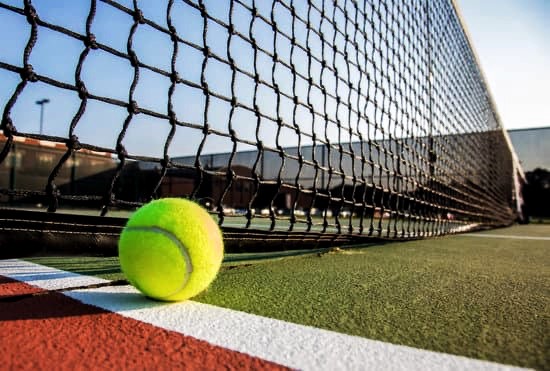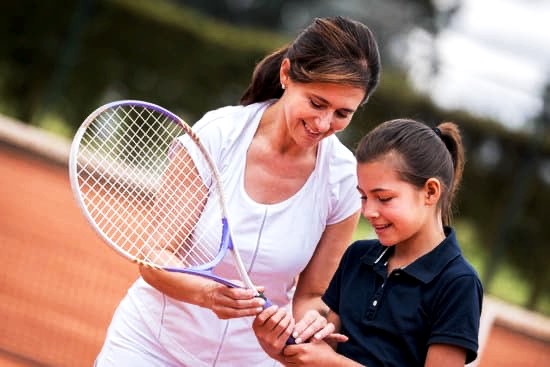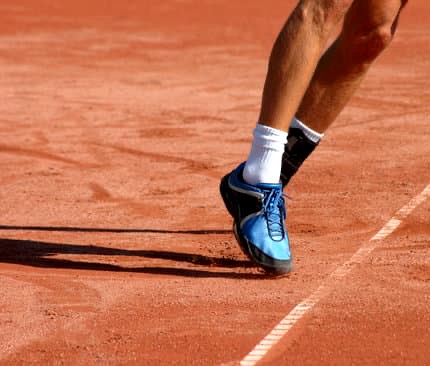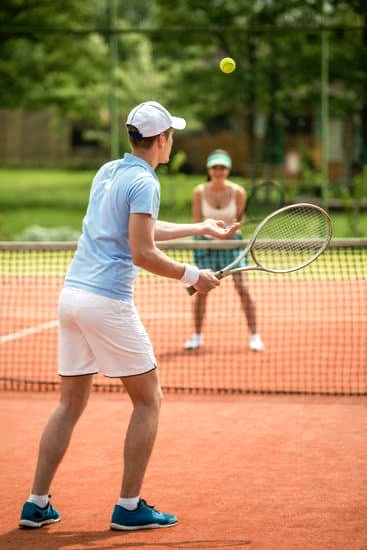Is tennis a hard sport to learn?
Yes! Tennis is a game that is both mentally and physically challenging. That said, it’s worth investing the time into because many people find the benefits of tennis last them a lifetime. Playing tennis offers numerous physical and mental benefits, from improving cardiovascular health to sharpening mental acuity. In this comprehensive guide, we’ll help beginners like you learn how to play tennis with ease and confidence. Let’s dive into the essentials of tennis and embark on an exciting journey together…
Essential Tennis Equipment and Gear: Before stepping onto the court, it’s crucial to have the right gear in hand. Here’s a breakdown of the essential tennis equipment:
Tennis racquet: Choose a racquet with the appropriate size and weight for your skill level and physical abilities. Beginners should opt for a lightweight racquet with a larger head size for more power and a bigger sweet spot.
Tennis balls: Pressureless balls are ideal for practice as they maintain a consistent bounce over time, while pressurized balls provide a livelier bounce and are used in official matches. As a beginner, it’s a good idea to start with pressureless balls.
Proper athletic attire and footwear: Comfortable, breathable clothing and supportive tennis shoes are crucial for optimal performance on the court. Invest in quality athletic wear and shoes designed specifically for tennis to ensure proper support and prevent injuries.
Optional accessories: Overgrips provide extra cushioning and grip on your racquet handle, dampeners reduce string vibration and improve comfort, and sweatbands keep perspiration at bay during intense matches.
Understanding the Tennis Court: Familiarize yourself with the court’s dimensions and layout to better understand the game:

Basic court terminology: Key areas of the court include the baseline (the back boundary), service line (the line dividing the court into two equal halves), doubles alley (the area between the singles sideline and doubles sideline), and the net (divides the court into two sides).
Types of tennis courts: Tennis courts come in three primary surfaces – hard, clay, and grass – each with unique characteristics that affect ball bounce and player movement.
The Basics of Tennis Scoring and Rules: Understanding the scoring system and basic rules will help you enjoy the game and track your progress:
Scoring system: Tennis uses a unique scoring system, with points progressing from 0 (Love) to 15, 30, and 40 before a player wins a game. Players must win at least six games to secure a set, and typically, two or three sets to win a match.
Serving rules and rotation: Each game begins with a serve, alternating between players. The server must hit the ball diagonally into the opponent’s service box, and the receiving player must allow the ball to bounce once before returning it.
In and out-of-bounds rules: A ball is considered in play if it lands within the court’s boundaries, including the baseline and sidelines. If it lands outside these boundaries, it’s considered out.
Tiebreak rules: If a set reaches a 6-6 score, a tiebreak is played to determine the winner of the set. The first player to reach 7 points with a 2-point lead wins the tiebreak.
Basic etiquette and sportsmanship: Good sportsmanship and proper etiquette are essential in tennis. Players should respect their opponents, the officials, and the game itself by following the rules and maintaining a positive attitude.
Fundamental Tennis Strokes: Mastering the basic tennis strokes is vital for developing your skills and enjoying the game:
Groundstrokes: Forehand and backhand techniques are the most common

Volleys: Forehand and backhand volleys are played at the net, with the aim of hitting the ball before it bounces. Maintain a firm grip, a ready stance, and use a compact swing to direct the ball with precision.
Overhead smash: The overhead smash is a powerful shot used to finish a point when the opponent lobs the ball high in the air. Position yourself beneath the ball, use an appropriate grip, and generate power by rotating your body and extending your arm.
Serve: The serve is another crucial aspect of tennis, as it initiates each point. Use a continental grip, stand with your feet shoulder-width apart, and toss the ball in the air while swinging your racquet in a fluid motion. Aim for consistency and accuracy before trying to add power to your serve.
Mastering Tennis Footwork and Movement: Good footwork is the foundation of strong tennis performance. Keep these tips in mind to improve your court movement:

Techniques for efficient and quick movement on the court: Practice side-to-side shuffling, split-step, and crossover steps to cover the court effectively.
Tips for maintaining balance and agility during play: Stay on the balls of your feet, bend your knees slightly, and keep your center of gravity low.
Tennis Strategy and Tactics: Understanding basic strategy and tactics can help you outsmart your opponent and win more points:
The importance of developing a game plan: Having a game plan allows you to play with purpose and capitalize on your strengths and your opponent’s weaknesses.
Basic singles and doubles strategies: In singles, focus on moving your opponent around the court and exploiting open spaces. In doubles, effective communication and teamwork are crucial to success.
Offensive and defensive tactics for different situations: Learn when to be aggressive and attack the net, and when to play defensively, keeping the ball in play and waiting for your opponent to make a mistake.
How to analyze and exploit your opponent’s weaknesses: Observe your opponent’s playstyle, identify patterns and weaknesses, and adapt your strategy accordingly.
Improving Your Tennis Skills: Consistent practice and focused training are essential for improving your tennis skills:
Importance of consistent practice and training: Regular practice helps to develop muscle memory, improve timing, and refine technique.

Tips for finding hitting partners or joining local tennis groups: Use social media, local clubs, or tennis meetups to connect with other players of similar skill levels for practice and friendly competition.
Benefits of taking tennis lessons or attending a tennis camp: Lessons with a qualified tennis coach or attending a tennis camp can provide personalized instruction, expert guidance, and accelerated improvement in your game.
Tennis Fitness and Injury Prevention: Maintaining physical fitness and taking preventative measures against injuries are essential aspects of playing tennis safely and effectively:
The role of physical fitness in tennis performance: A good level of fitness allows you to move quickly and efficiently on the court, maintain stamina throughout a match, and reduce the risk of injury.

Proper warm-up and cool-down routines: Warm up with dynamic stretches and light jogging to increase blood flow and prepare your muscles for activity. After playing, cool down with static stretches and gentle movements to aid recovery and reduce muscle soreness.
Tips for preventing common tennis injuries: Use proper technique, wear appropriate footwear, and listen to your body. If you experience pain or discomfort, take a break or consult a healthcare professional to avoid exacerbating injuries.
In this guide, we’ve covered everything a beginner needs to know to start playing tennis, from choosing the right equipment and understanding the court, to mastering the basics of scoring, strokes, and strategy. We also discussed the importance of physical fitness, injury prevention, and continuous improvement through practice and training. Tennis is a fun and rewarding sport that offers numerous physical and mental benefits.
We encourage you to pick up atennis racquet, step onto the court, and experience the thrill of tennis for yourself. As you progress in your tennis journey, remember to visit TennisBaseCenter.com for more valuable content, tips, and resources to help you take your game to the next level.

